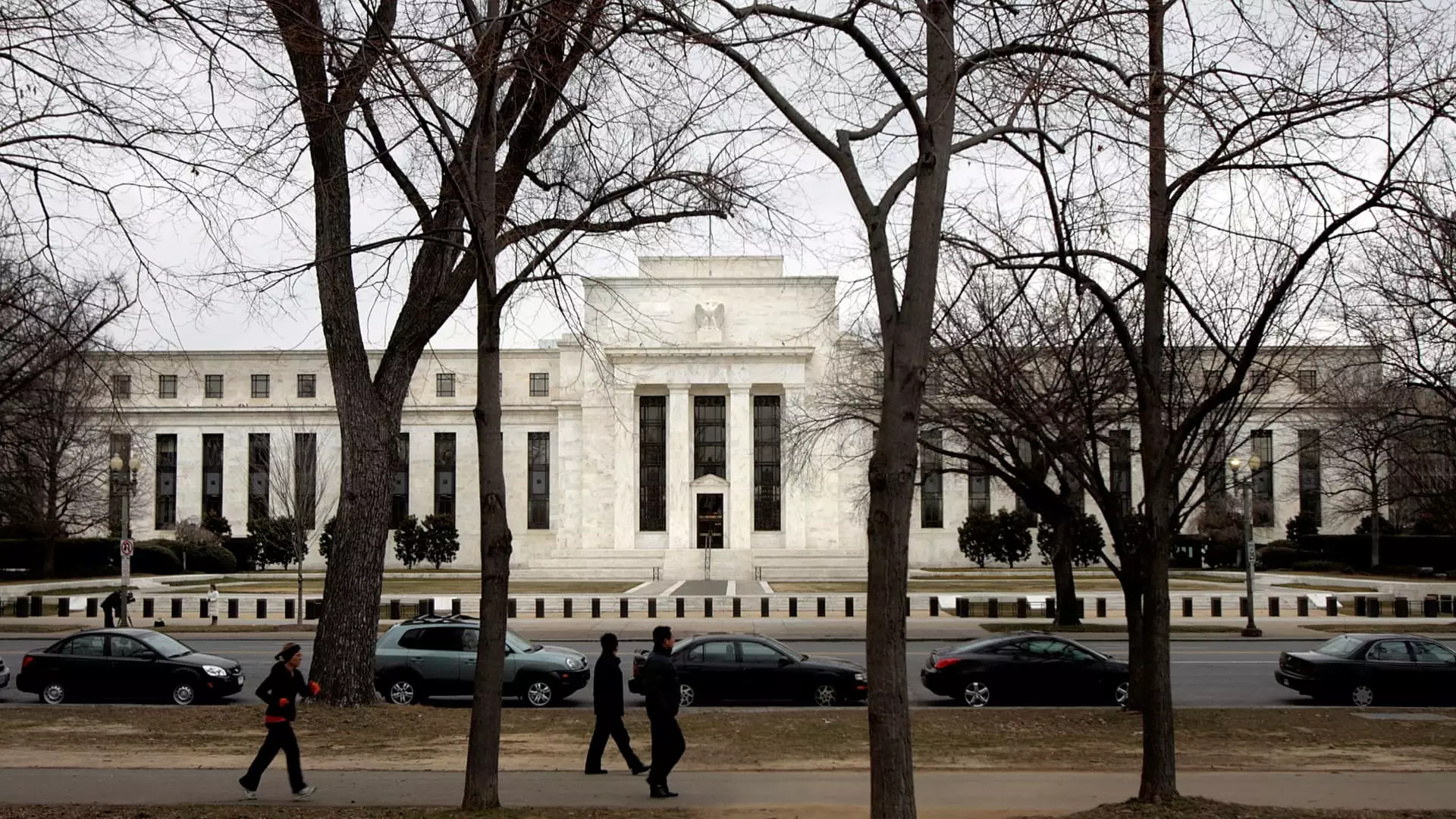On a pivotal Wednesday, the Federal Reserve decided to maintain its interest rates, staving off immediate cuts even as inflation continues to linger well above the targeted 2% threshold. This decision marks a significant moment, especially considering the backdrop of President Donald Trump’s recent declaration urging for immediate reductions in interest rates during his return to office. With inflation slowly easing but still a formidable challenge, the anticipation of rate cuts later in the year remains tempered, largely echoing the perspectives shared in the most recent CNBC Fed Survey.
Economists and analysts underscore a reality that consumers grappling with the burdens of high prices and elevated borrowing costs may not experience relief in the short term. Michele Raneri, a senior executive at TransUnion, encapsulated the sentiment, indicating that concerns about inflation, though alleviated, are not extinguished. The Fed’s cautious approach seems to indicate fewer rate adjustments over the course of the upcoming year than previously speculated.
The federal funds rate—the rate at which banks lend to each other overnight—holds significant sway over various consumer rates, despite being indirectly related to the borrowing costs individuals encounter. The Federal Reserve previously raised this rate to a peak not seen in over two decades to combat inflation that soared to levels not witnessed since the early 1980s. In stark contrast, Trump’s previous assertions on the campaign trail reflected a growing public sentiment: high inflation and interest rates were detrimental to the American lifestyle.
The impacts of the Fed’s rate hikes have cascaded down to consumers, with the average credit card interest rate jumping from 16.34% in early 2022 to upwards of 20% today. Even as the Fed initiates cuts to its benchmark rate, these changes may not translate to immediate relief for consumers, with experts predicting that the proposed reductions may not be impactful enough to significantly ease financial burdens. Greg McBride from Bankrate articulates a clear warning that consumers should not expect the central bank to provide sweeping solutions.
For prospective homebuyers, the consequential effects of elevated interest rates are profound. Current data indicates that the average 30-year fixed-rate mortgage hovers just above 7%, which further constricts purchasing power in a real estate market already inflated by rising prices. Even if the Fed manages to lower rates gradually, the existing landscape of fixed-rate mortgages means that individuals locked into these loans will not see an immediate benefit unless they refinance or relocate.
The auto lending sector mirrors this trend. With auto loan interest rates fixed, rising car prices paired with high borrowing costs have resulted in substantial monthly payments and diminished affordability. Joseph Yoon of Edmunds highlights a stark reality: as the average transaction price for a new vehicle nears $50,000, car-buyers face challenges that seem unlikely to ease, as interest rates remain elevated.
Given the persistent high-interest climate, consumers may need to explore innovative strategies for managing their debt. Matt Schulz of LendingTree suggests that individuals facing burdensome credit card rates could benefit from seeking lower-interest personal loans or utilizing interest-free balance transfer options as potential lifelines. These strategies may offer some respite, although they require proactive engagement.
Interestingly, those holding savings might find a silver lining in this intricate landscape. While the Fed’s restraint from aggressive rate cuts may appear challenging for borrowers, it could yield positive outcomes for savers. With yields on online savings accounts reaching their most favorable levels in over a decade—hovering around 5%—consumers are encouraged to take advantage of high-yield savings offerings.
As we move into 2025, the Federal Reserve’s current stance on interest rates presents a complex scenario for consumers. While inflationary pressures slowly recede, high borrowing costs continue to challenge household finances. The anticipated gradual rate cuts may not deliver the sweeping relief that many hope for, especially as economic realities continue to evolve. As individuals navigate this uncertain financial terrain, proactive debt management and wise savings strategies will be crucial for maintaining financial stability.

